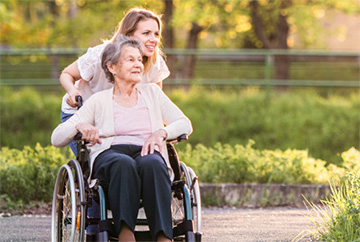Even before the Covid-19 pandemic, the hospital network due to seasonal flu had for years struggled with a recurring shortage of hospital beds. Due to a lack of beds, this situation created significant gymnastics for the hospitals in their management. Today, the health measures put in place
due to the Covid-19 pandemic have made it possible to significantly reduce the number of people
affected by the flu, however this number has been widely supplanted by the cases having contracted the Covid-19. In addition, the average length of hospital stay for Covid cases is around 17.2 days
compared to 6.4 for seasonal flu1. This increased hospitalization time coupled with a large number
of cases could result in a significant shortage in the number of beds for acute and intensive care
hospitalization. In anticipation of this problematic situation, hospital managers had to be creative
in modifying premises that were not originally suitable for receiving patients. As examples, we have
seen gymnasiums and activity rooms in long-term care hospital centers that have been transformed into a Covid unit in order to be able to increase the number of beds available.
Providing safe care during a pandemic
The creation of these new temporary care units required the establishment of infrastructures that
allow safe care to be provided. In these Covid units, temporary rooms have been created. By transforming the existing premises into a Covid unit, it was necessary to provide them with adequate
ventilation in order to limit the risks of contamination of the external environment. Managers were
therefore obliged to adapt the existing ventilation systems and even in some cases to set up an adequate parallel ventilation system. In addition, sufficient equipment had to be provided to provide
care, for example: artificial respirators, personal protective equipment, personnel for care as well as
for hygiene and sanitation. However, the availability of sanitation facilities due to the rapidly changing situation and the precariousness of the situation can be problematic. Indeed, this equipment
may be insufficient due to the number of people it must serve.
This situation represents a risk for
the spread of infections because the toilets will be shared. In addition, accessibility to the toilet can be difficult for some patients due to the distance between them. This situation can be
of particular concern for patients who have diarrhea caused by Covid-19 1,2,3,4,5. This is why the
use of commode chairs that can be easily disinfected and dedicated to each room solves this
problem. However, transport for the emptying of commode pots poses a risk of contamination by
splashing for staff.
The use of hygienic bags containing an absorbent for this type of situation
is therefore very appropriate. In this type of environment, in addition to the stool, provision
should be made for urine management. Here again, the use of a urinal without absorbent represents a risk of splashing as the distance to be covered to empty it can be relatively great.
In conclusion, the creation of temporary units to accommodate patients with Covid-19 requires significant logistics in order to maximize the care time required for each patient. In this context, the
safe management of biological fluids becomes a key element to control. There is the possibility of
reducing, or even practically eliminating, the time spent back and forth to empty the equipment
in the toilets using suitable equipment. In addition, a significant factor, this equipment will reduce
the risk of staff contamination and the spread of infections.
References
1 Gilca R, Amini R, Carazo S, Fortin E, Charest H (Institut National de Santé Publique du Québec, INSPQ),2020, Comparaison des hospitalisations dues à la COVID-19 pendant la première vague à celles dues à l’influenza pendant les saisons
précédentes , 23 pages.
2 Xu D, Zhang Z, Jin L, Chu F, Mao Y, Wang H, 2005. Persistent shedding of viable SARS-CoV in urine and stool of SARS
patients during the convalescent phase. Eur J Clin Microbiol Infect Dis 2005;24(3):165–71.
3 Tang A, Tong ZD, Wang HL, Dai YX, Li KF, Liu JN, 2020l. Detection of novel coronavirus by RT-PCR in stool specimen from
asymptomatic child, China. Emerg Infect Dis ;26(6).
4 Wang X, Zheng J , Guo L , Yao H , Wang L , Xia XD, Zhang W, 2020.Fecal viral shedding in COVID-19 patients: Clinical
significance, viral load dynamics and survival analysis, Virus research 289, 198147, 7p.
5 L’Institut national d’excellence en santé et services sociaux du Québec (INESSS), 2020. Covid-19 et symptômes gastrointestinaux. Québec. Qc. 12 p.
6 Amirian E., 2020. Review Potential fecal transmission of SARS-CoV-2 : Current evidence and implications for public
health,Review, International Journal of infectious diseases,95, 363-370.


